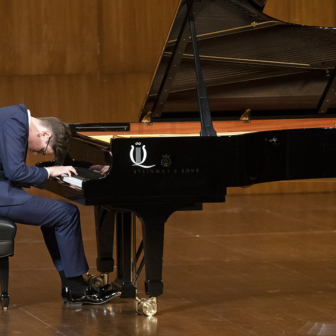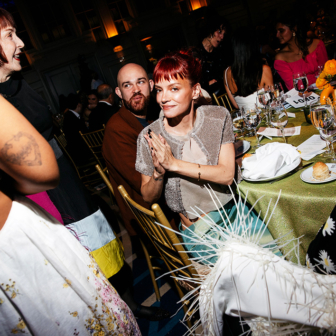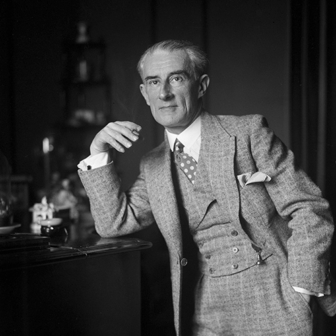In the late 1970s and early 1980s, when classical musicians were ever more in the throes of the period-instrument movement, there was much talk of “authenticity.” They played the music of Bach and Handel, Haydn and Mozart on gut-stringed violins and cellos, wooden flutes and valveless horns and trumpets, and it wasn’t just the instruments; of equal importance was the manner of the music (some would have said the mannerisms).
Performances involved fewer string players, swifter tempos, the avoidance of vibrato, and a range of other “historically informed” practices drawn from eighteenth-century reports and treatises. It wasn’t long before Bach and Handel had vanished from the repertoires of the world’s symphony orchestras, being left to specialist ensembles such as the Academy of Ancient Music and Musica Antiqua Köln. By the mid 1980s, Haydn and Mozart were beginning to look similarly endangered.
But that word “authenticity” was always problematic, as the period-instrument players themselves came to realise. You might have been playing your Bach in an authentic eighteenth-century style (though how could you be sure?) but your listeners were decidedly inauthentic, because they’d have heard Wagner and Stravinsky, Miles Davis and the Beach Boys. They couldn’t be expected to listen like eighteenth-century people.
And there are different ways of being authentic. In a 1950 Salzburg Festival recording Wilhelm Furtwängler conducts what sounds like the full symphonic strings of the Vienna Philhamonic in Bach’s Brandenburg Concerto No 5. Furtwängler is also one of the three soloists in the piece, directing the performance from behind a grand piano. Bach’s idea of a string orchestra in this music was probably just one to a part, not Furtwängler’s fifty-odd players, and he wrote the elaborate solo keyboard part for harpsichord, not piano.
Setting aside the quantity and quality of instruments, though, it is the style of Furtwängler’s Bach that is so striking. Slow and luxurious, the orchestral sound might almost be Richard Strauss, and when the big piano cadenza comes at the end of the first movement it sounds like late Brahms. It is the antithesis of period-instrument playing, and yet in the truest sense an authentic experience, every note considered, felt and communicated. I have never forgotten my first open-mouthed encounter with the recording.
The period instrument movement didn’t start in the 1970s — that was merely its zealous heyday — and in 2024 it remains as strong as ever, serving up revelations big and small. Often it is simply a matter of balance. In Bach’s time, for instance, oboes had a fatter sound than their modern counterparts, trumpets a thinner sound, so the composer could have pairs of these instruments trade phrases and they’d be well matched. That’s hard to achieve on modern instruments. In general, if you use the instruments a composer wrote for, tune them properly and play them well, the orchestra will balance itself.
Recent examples include a wonderful new album from Skye McIntosh’s Australian Haydn Ensemble of two Mozart concertos (K216 for violin and K467 for piano) and the Prague symphony, in which top-class playing and generous phrasing are linked to a wonderful flexibility of tempo. The music comes freshly to life.
Under François-Xavier Roth the French orchestra Les Siècles has pulled off something similar with the music of Ravel. It seems surprising because some of this music is less than a hundred years old and you would think the instruments of that time and place wouldn’t be so very different from those of today. But you only have to listen to the oboe solo that begins Le Tombeau de Couperin to be struck by a startlingly rich and dark sonority, quite at odds with that of the modern oboe.
I might add that one of the best things about these recordings is the way the players respect the composer’s desire for his music to be played rather than interpreted. Ravel was very precise about rhythmic freedom, for example, occasionally going to the trouble of writing “don’t slow down” in places where he knew players would automatically do so and the result would be vulgar (the final bar of “Ondine” is a case in point).
Last weekend at the Woodend Winter Arts Festival in Victoria, John O’Donnell led a period-instrument orchestra, Accademia Arcadia, and the singers of his Ensemble Gombert in a wonderfully direct and unfussy performance of Bach’s St John Passion. The instrumental blend was transparent and alluring, the tempos never flagged and there was just the right amount of fervour in the singing of chorus and soloists.
For me, however, the main revelation was O’Donnell’s use of a boy instead of a woman to sing the two soprano arias. Not only was it historically apt (Bach would have had a boy singer in mind), it made musical sense, both arias being lightly scored for pairs of flutes to match the smaller voice. Crucially, it also made sense of the texts. In the soprano aria of Part One, the singer, all innocence, follows Jesus with “happy steps”; in Part Two, the soprano’s heart melts “in floods of tears” after the Crucifixion. In both cases, the sound of a boy’s voice (eleven-year-old Benjamin Fullarton, singing with impressive confidence) underlined the precise affect of the music and the words. This, one felt, was authentic in every way. •




